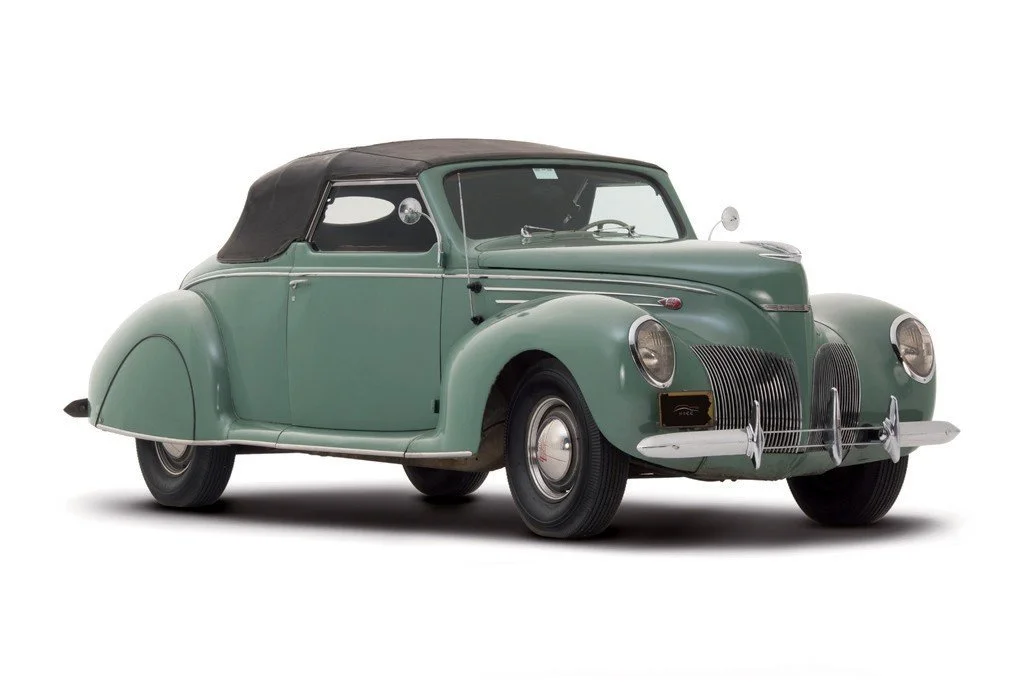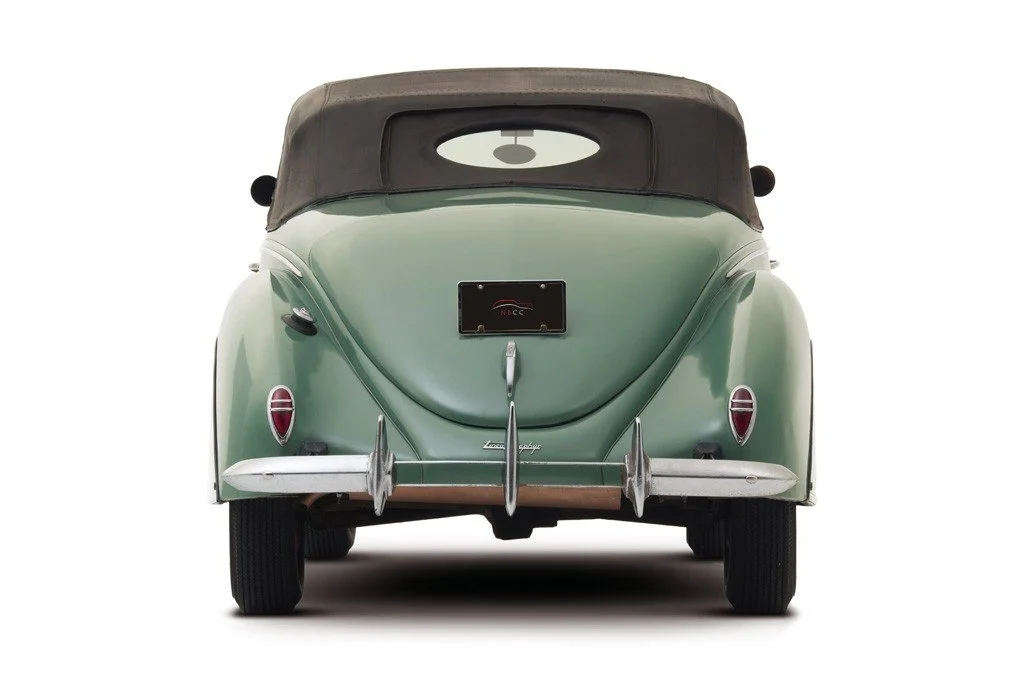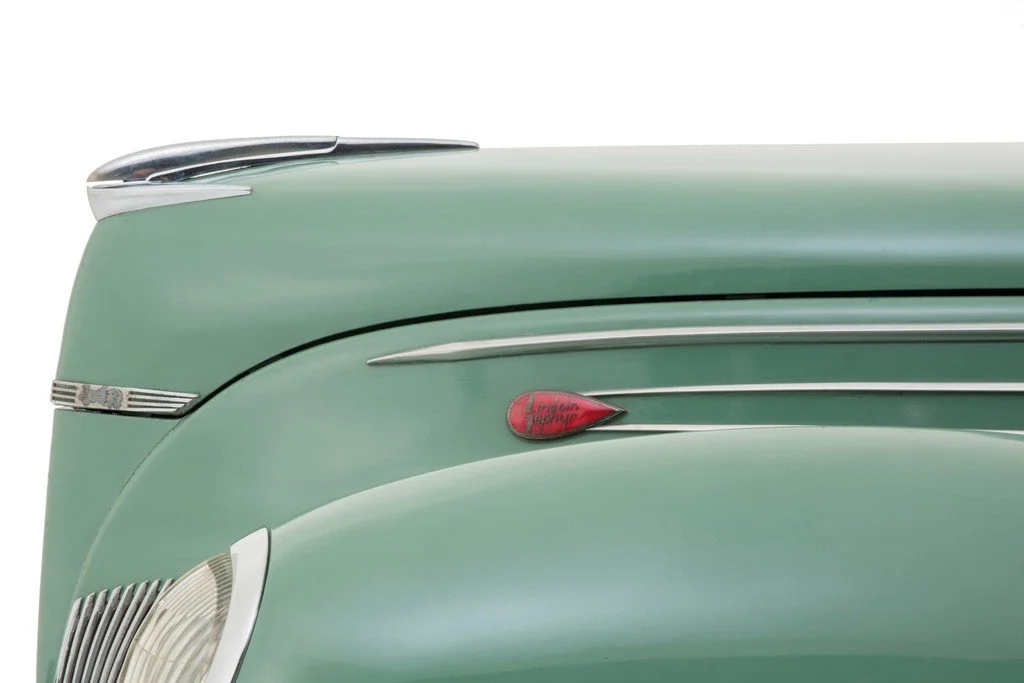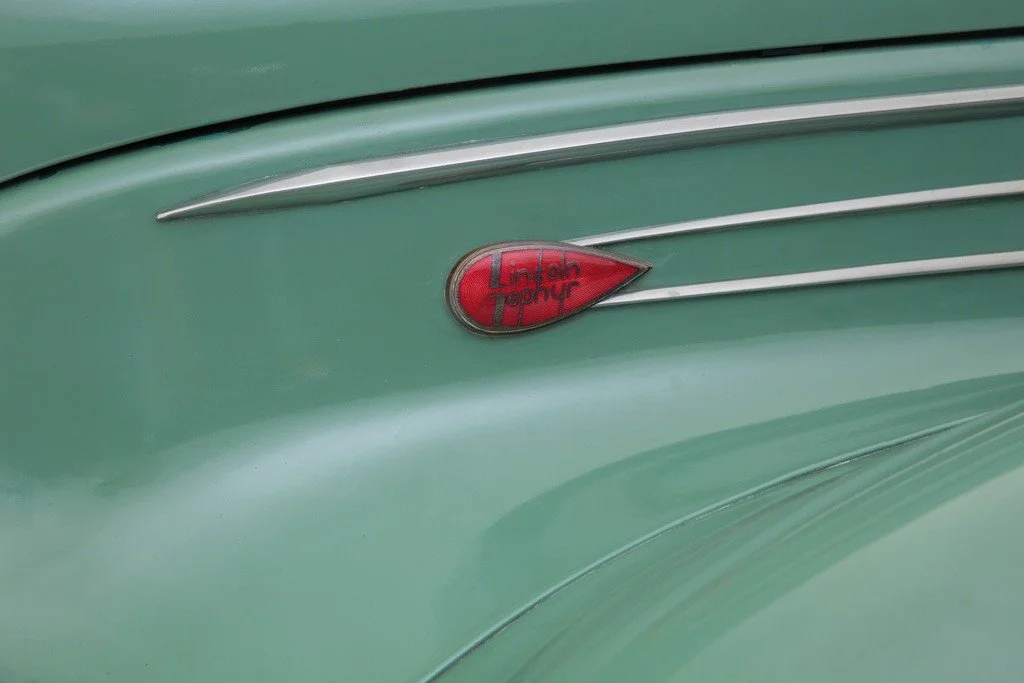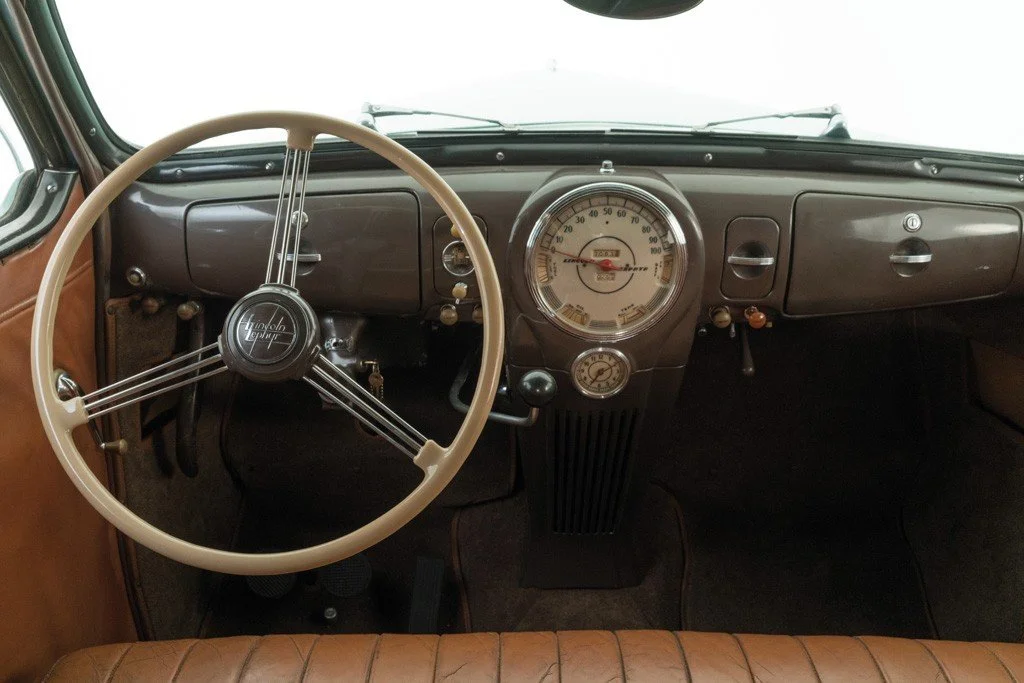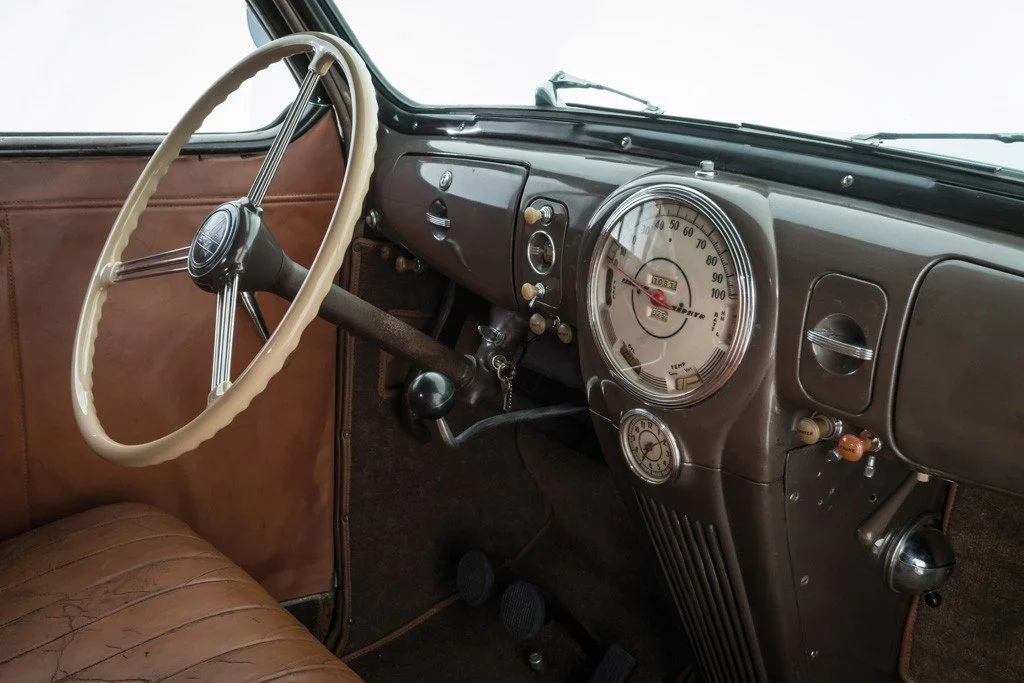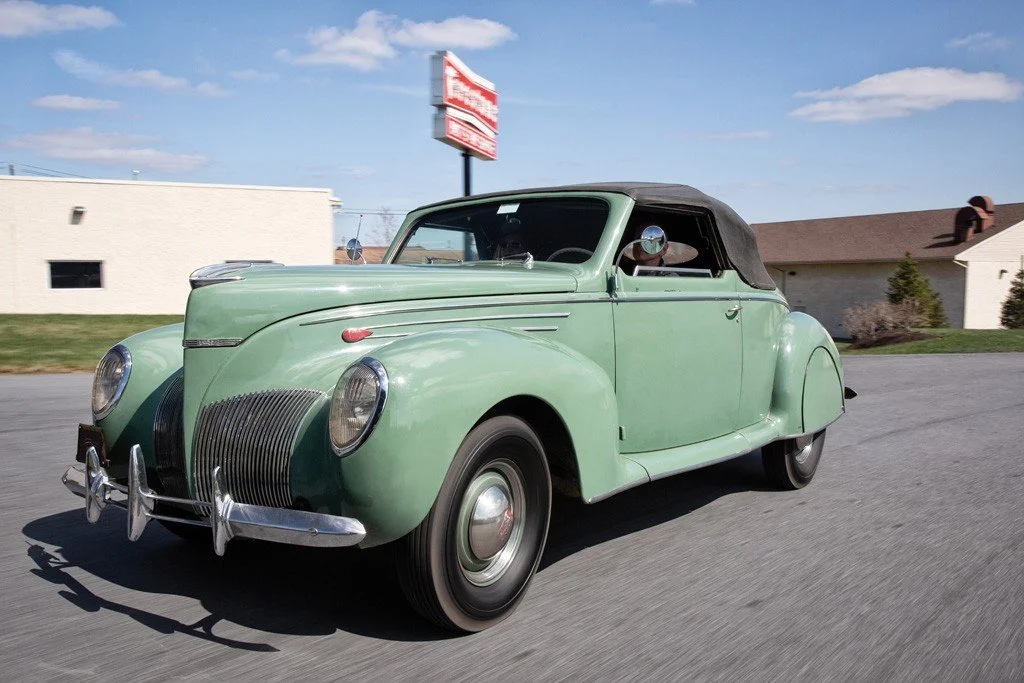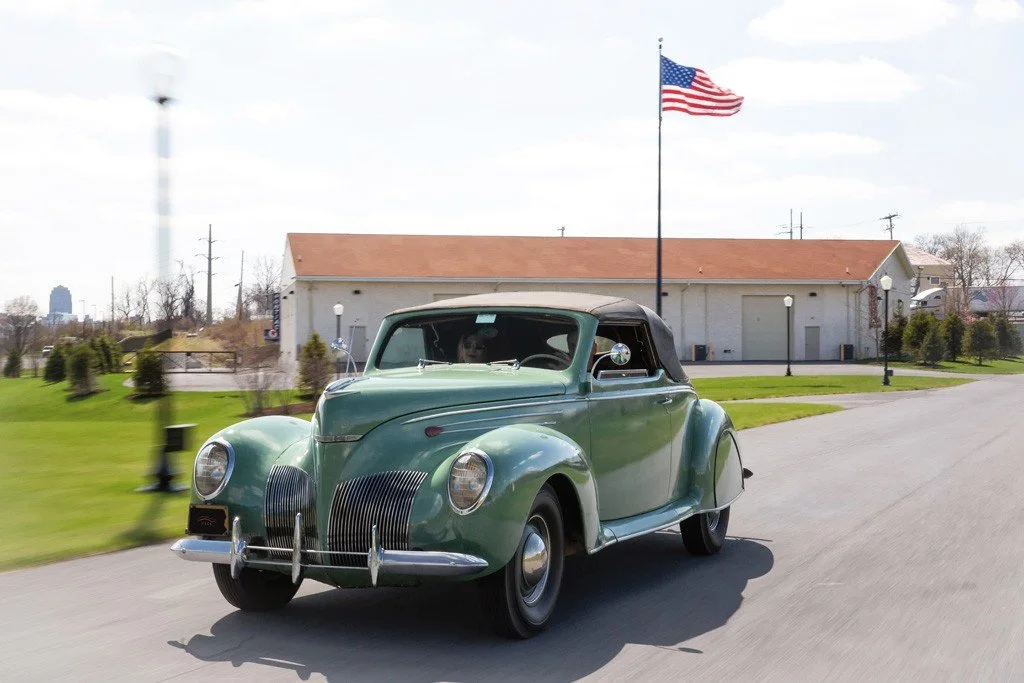-
This Lincoln Zephyr convertible was purchased by the Nicola Bulgari Car Collection in October 2016 from Carl Parson after seven years of negotiation. The car is in completely original condition, the only exception being a single older repaint to the exterior. It has never been taken apart. Once the car was purchased, the crew at Precision Motor Cars went through it mechanically and got everything working. They installed a new wire harness and exhaust as well. The instruments in the dash were cleaned and calibrated, the fuel tank was boiled and sealed, the cooling system was flushed and the carburetor was rebuilt. The old torn stitching on the seats was removed, the original leather was cleaned so that it could still be saved, adding to its great originality. This car is a real survivor. The door jambs, trunk and under the hood are still the original factory green. It still has its original top and interior as well.
There are fewer than 20 original condition examples of these cars registered in the Lincoln Zephyr club.
-
Company
Ford Motor CompanyWheelbase
125inInterior trim
Tan leatherBrakes
front and rear drumsMake
LincolnLength
209.5inEngine
V12 - 267cidTires
7.00x16Model
Zephyr - Model H76Width
74inCarburetor
1 StrombergOriginal Price
$1,700Body style
2-door Convertible CoupeWeight
3375lbsHorsepower
110hp @ 3900rpmProduction
640Model year
1939Exterior paint
GreenTransmission
Synchro-shift 3-speed manual -
Henry Ford had bought Lincoln for eight million dollars when the Company founders Henry Leland and his son Wildfred went bankrupt in the depression of 1921. He made the purchase in part to please his son Edsel, an artist and a fine car lover, and in part as a genuine enthusiast of fine machinery. Of course, the production of a prestigious car would not fail to add luster to his company’s production. The Lelands were hired to run the company, but they soon became involved in a policy dispute with Henry Ford and left the firm early in 1922. They left a legacy of superb engineering, and a stable of finely trained engineers and craftsmen. The Lincoln automobile was a newcomer on the market, but it soon developed an enviable reputation for comfort, reliability and speed. In term of sales, the Lincoln brand failed to satisfy Ford’s expectations: even if the brand made money throughout the twenties, both Packard and Cadillac outsold Lincoln easily. If its sales position in 1929 was questionable, by 1933 it became dramatic. Packard, traditionally a leader in the luxury car field, produced less than 10,000 cars, while Lincoln was down to one fifth of that figure. By that time, it was a common knowledge in the industry that both Cadillac and Packard were planning more affordable cars to sell in the medium price range. LaSalle was a cheaper Cadillac, based on the Oldsmobile cars, introduced to the market in 1934, while Packard would follow in 1935. It was time for Lincoln to do something about its ailing sales. Bodies for Lincoln were produced at the Briggs Manufacturing Company, a large independent coachbuilder that worked for General Motors and Ford. Briggs at the time was eager to increase the volume of business it was doing with the Ford Motor Company, so they proposed to Edsel Ford some sketches done by a young designer for a new revolutionary car. Edsel was interested, so a couple of prototypes were built, both with Ford V8 engines mounted in the conventional location, plus a wooden mock up for a rear engine car with a streamlined body. The last one piqued the most interested, so it was reworked to use a standard front engine configuration, but with an ultra-modern appearance, in part similar to the Volkswagen car introduced three years later. The front end was reworked by Ford chief designer E.T. Gregorie, to provide the needed space for a front engine configuration. Mechanically, the new Lincoln Zephyr was pure Ford, as the suspension, transmission, brakes and rear end were all of Ford origin. The engine was directly derived from the popular flathead V8 that powered the cheaper Fords, but with four cylinders added. Edsel Ford had directed chief engineer Frank Johnson to develop a new V12 engine, to one-up the industry with 12 cylinders to the competition’s 8, using as many parts from the V8 as possible. The stroke was maintained the same, as were many other parts, and even the external look was very similar to the engine that powered so many popular cars. With just 110 horsepower from a 267 cubic inch displacement, the new engine was not a powerhouse, but it provided good performance for the new 1936 Lincoln Zephyr. The most revolutionary feature of the new car was the unit-body construction, where the body was permanently welded to the frame, offering a substantial weight reduction with more torsional rigidity. Lincoln had a winner, with a production in the first year of almost 15,000 cars in 1936, and more than 28,000 the following year. 1938 brought a major facelift with a broad, low grille, while 1939 saw the long awaited introduction of hydraulic brakes.

